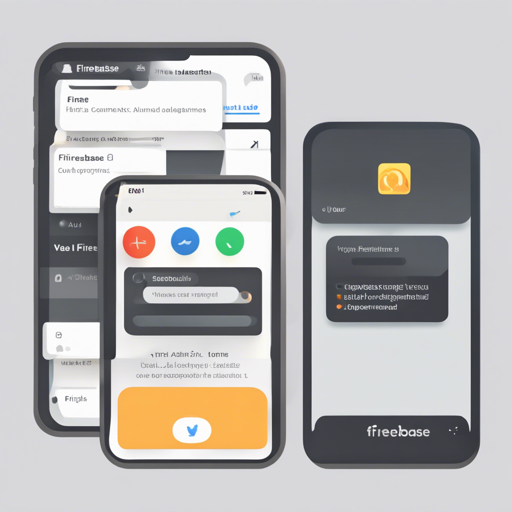FirebaseUI for iOS is a powerful open-source library that connects the common UI elements directly to the Firebase database, allowing seamless data storage and real-time updates. In this article, we’ll guide you through the installation, local setup, and sample project configuration of FirebaseUI. Moreover, we will offer troubleshooting tips to help you avoid common pitfalls.
Getting Started with FirebaseUI Installation
FirebaseUI supports iOS 10.0+ and requires Xcode 11 or newer. The easiest way to add FirebaseUI to your project is through CocoaPods. Here’s how:
pod 'FirebaseUI', '~> 8.0' # Pull in all Firebase UI featuresIf you want to be more selective about the features you include, you can add individual pods for the specific Firebase components you need:
pod 'FirebaseUIFirestore'– Only pull in Firestore featurespod 'FirebaseUIDatabase'– Only pull in Database featurespod 'FirebaseUIStorage'– Only pull in Storage featurespod 'FirebaseUIAuth'– Only pull in Auth featurespod 'FirebaseUIFacebook'– Only pull in Facebook login featurespod 'FirebaseUIGoogle'– Only pull in Google login featurespod 'FirebaseUIPhone'– Only pull in Phone Auth login features
When including FirebaseUI in a Swift project, don’t forget to add:
platform :ios, '13.0'use_frameworks!Alternatively, you can manually include the FirebaseUI Xcode project in your project and have the Firebase framework as well.
Local Setup for Contribution
If you wish to contribute to FirebaseUI, you need to set up your local environment. This involves the following commands:
$ git clone https://github.com/firebase/FirebaseUI-iOS.git
$ cd FirebaseUI-iOS
$ cd Auth # or PhoneAuth, Database, etc.
$ pod installMoreover, you can try FirebaseUI using:
$ pod try FirebaseUIConfiguring Your Sample Project
To effectively run the sample projects, you need to configure your Xcode project correctly:
- Download the GoogleService-Info.plist from the Firebase console and place it into the sample project folder.
- Update URL Types in Project Settings under the Info tab:
- REVERSED_CLIENT_ID – take value from the GoogleService-Info.plist
- fbYOUR-APP-ID – use your Facebook App Id
- Update Info.plist with Facebook configuration values like FacebookAppID.
- Enable Keychain Sharing in Project Settings under Capabilities.
- Configure your Firebase App Database using the Firebase console.
- For Phone Auth, ensure you configure Push Notifications.
For setting up Apple Push Notifications:
- Enable Push Notifications in the Capabilities tab of your app target.
- Enable Background Modes for Background fetch and Remote notifications.
Finally, you need to upload your APNS Certificate to Firebase as detailed in the Firebase documentation.
Troubleshooting Common Issues
Here are some common troubleshooting tips to help you resolve issues that may arise:
- Ensure you have the right version of CocoaPods installed.
- Verify that all necessary permissions and configurations in the Firebase console are correct.
- Check your information in the
Info.plistfile, especially regarding Facebook configuration. - If you encounter issues with authentication, re-check the API keys and configuration files.
For more insights, updates, or to collaborate on AI development projects, stay connected with fxis.ai.
Conclusion
FirebaseUI for iOS provides a robust framework for managing complex interactions with Firebase services efficiently. By utilizing the installation steps and configurations provided in this guide, you can enhance your project with ease.
At fxis.ai, we believe that such advancements are crucial for the future of AI, as they enable more comprehensive and effective solutions. Our team is continually exploring new methodologies to push the envelope in artificial intelligence, ensuring that our clients benefit from the latest technological innovations.

